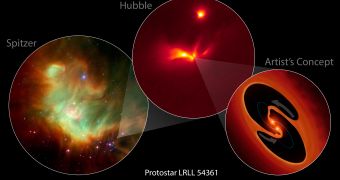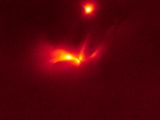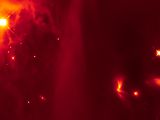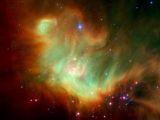NASA astronomers have used two of their most important observatories, the Spitzer and the Hubble space telescopes, to unravel a mystery, periodic outburst of light coming from an object dubbed LRLL 54361.
Using infrared and visible light data, the astronomers have concluded that the object is made up of a couple of early stars in a binary system.
The two protostars can't be more than a few hundreds of thousands of years old and are in their very early stages.
Every 25.34 days, a bright flash emanates from the object astronomers now believe that the motion of the two protostars causes it.
The two are currently orbiting each other in a very eccentric orbit, coming in very close to one another periodically.
When this happens, gas trapped between the two objects hits one or both the protostars resulting in a surge of radiation, observable in the infrared and visible spectrum.
Binary systems with the stars so close together are very rare and astronomers believe that this is just a temporary phase in the early formation of such a system.

 14 DAY TRIAL //
14 DAY TRIAL // 


